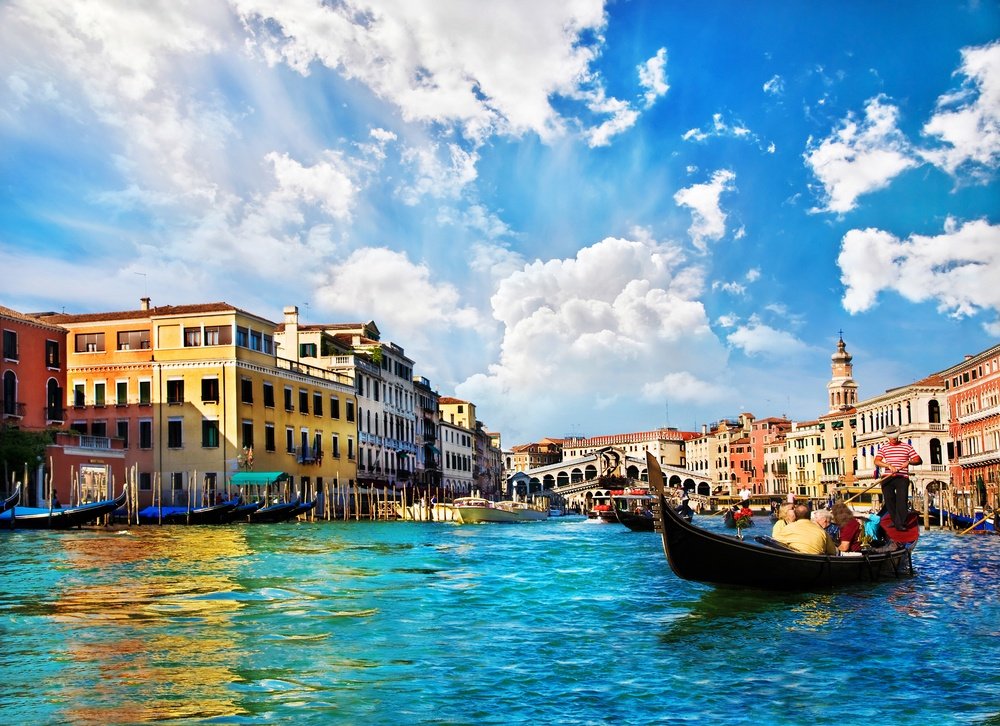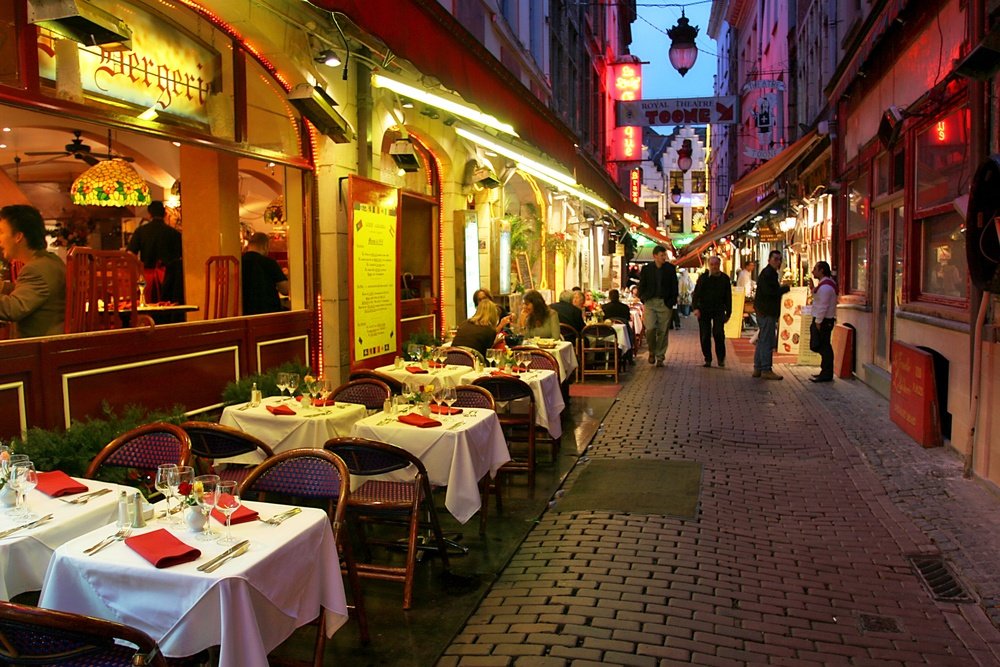Business
Traveling within Europe: 15 practical tips you must know about
Find tips for traveling within Europe, the best time to travel, finding tickets (even hard-to-get tickets) and some tips to prepare you for the unexpected.

Getting around Europe
1. International flights vs. travel within Europe
Book your international flights into two convenient airports for your travels and then travel within Europe by other means. Booking all your flights on one international itinerary can be expensive and the flights probably are not direct flights within Europe.
For example, if you are flying from Chicago to Europe, you might choose to fly round trip to London or Paris and then travel within Europe by other means, which can save you a lot of time and money. You can even fly into London and out of Paris, it doesn’t have to be in/out of the same city. (Use advanced or multi-city search for airfares to fly in/out of different cities.)
Let’s look at some of the options for low cost, convenient travel around Europe. If you want to travel to several countries in Europe, options include plane, train, automobile or ferry. Let’s look at them in order.
2. Using budget airlines in Europe, a.k.a. cheap airlines
Yep, these are those airlines we love to hate—cheap, no-frills—often at secondary airports or less convenient terminals. The availability of several discount carriers in Europe means a low-cost airline probably services your route, and you can find cheap flights to anywhere in Europe.
Ryanair is the largest airline in Europe. Wow, Easyjet, Vueling, Pegasus, Eurowings are other budget airlines in Europe. Skyscanner (or Skyscanner app) or Kayak are good flight search engines to identify airlines and flight options servicing your route.
Pro tips for budget airlines in Europe:
- Pay careful attention to the luggage restrictions and extra fees for these airlines. The extra fees and even luggage fees can be more than the airfare. The great advantage of them is direct flights.
- Check departure and arrival times and airport locations and transfers. If you are landing at a secondary airport or leaving very early and there is no public transport- transfers may be more than the cost savings of the cheap airfare.
- Always compare your total costs when considering the best option.
3. Train travel in Europe: How to find cheap rail tickets in Europe
I feel as though train travel in Europe was more common before the rise of the low-cost airline. Train routes in Europe are extensive and in places with high-speed trains, this is my preferred method of transport due to the following advantages:
- No hassles with airport security.
- The train station is usually in the center of town making it very convenient.
- Luggage allowances and security restrictions are easier.
However, the train can be expensive, connections can be poor, and routes can be slow. Check the train versus other means of travel and then decide.
There are both domestic (i.e., within a country such as Spain) and international routes (i.e., London to Paris). Advanced booking is advised, especially for international train tickets. The earlier you book train tickets in Europe, the cheaper they are, with many offering discounts or lower-cost fares for advanced purchase. Advance purchase is your best bet for finding cheap train tickets in Europe.
Rome2Rio or GoEuro are both great resources for determining how to get from point A to B in Europe.
Eurail passes used to be very common and are still available. If you are traveling by train frequently in a short amount of time, a Eurail pass may be a good option. For most people, you are probably better off buying individual tickets for train travel. And, it gives you the flexibility to hop a flight or a ferry for part of your travels.
Pro tips for buying train tickets in Europe:
- Usually, the earlier you purchase train tickets the cheaper the fare.
- Using a third-party booking site like Loco2 is often easier for those with foreign credit cards to buy train tickets in Europe. The train sites are notorious for not working or not taking foreign credit cards. In the last seven years, I have never once been able to successfully complete the purchase of a train ticket online in either Italy or Spain on the carrier’s site. I was very pleased when I found Loco 2, and that is why I recommend them to everyone now.
4. Automobile travel in Europe
Road infrastructure in Europe is excellent. Keep in mind that if you are American, gasoline or diesel fuel costs will be much higher than at home. Many roads are toll roads, or some countries require a vignette to use the interstate within the country. Take these costs into account when comparing transportation options.
Car rental in Europe
We have an excellent post about the many fees associated with renting a car. Several of these will apply in Europe, including the extra driver. (No, your spouse is not covered, if you both plan on driving, you will need to both be listed as drivers, and there is a fee).
Check carefully if the car can be taken across borders, and if so, the fees and restrictions. Renting a car in Europe crossing borders can be expensive and have a lot of hidden fees. Look for a car rental quote that is all-inclusive for car hire. (Hint: most quotes are not).
We use and recommend Holiday Autos for reliable cheap international car rental. The quotes are all inclusive and the search engine checks all international and local carriers. The rates are by far the lowest we have found on any rental car search engine.
Be aware if you wish to rent an automatic car, you need to make a reservation for an automatic. Many car rentals in Europe are a manual transmission.
If you are planning on renting a car in Europe between countries, you may want to consider car leasing in Europe.
Short-term car leasing in Europe
An option for car travel within Europe if you will be there for longer than three weeks and plan on driving between countries is to lease a car in Europe. This is an excellent program for travelers and can save you a lot of money on your European car rental.
Pro tip for travel by car in Europe:
- Compare the cost of car rental versus leasing a car.
- Make sure your rental car quote is for all-inclusive car hire—check the fine print.
- Don’t forget to include fuel and tolls when comparing road versus train travel.
5. Bus travel within Europe
There are many bus companies providing transport both within a country and between countries in Europe. Rome2Rio or GoEuro will tell you which bus company services your route and how to buy tickets for bus travel in Europe.
6. European ferries
There are a lot of ferries in Europe, and this can be a great option, especially if you are island hopping or traveling by a car.
The ferry can save you time and money and often is the most direct route.
Great places to explore using the ferry:
- The United Kingdom—ferries operate between England, Ireland, Northern Ireland and Scotland, and provide service to mainland Europe.
- In the Mediterranean—around Italy and Greece
- Scandinavia
- The Greek Islands
Pro tip for travel by ferry in Europe:
- The overnight ferry can be a great option—allowing you to travel while you sleep and often costs the same as a hotel room.
- Check cancellation terms.

Summer is a busy, crowded and expensive time in Europe. (Photo by DepositPhotos)
Best time to visit Europe
7. Summer travel in Europe: Pre-book activities in Europe
If you can avoid travel to Europe in June and July, I would. Summer is a busy, crowded and expensive time in Europe.
That said, most things are open during the high season, and if you plan ahead, you can usually get hotel rooms and tickets for attractions you would like to see.
For popular attractions including museums, shows and amusement parks, you will need to organize tickets well in advance of your arrival. Many attractions, including museums, offer timed access, so you will need to nominate both the day and time you will visit.
Many popular attractions also offer “skip the line” tickets, and these can save you a lot of time and/or provide early access to some attractions before they become too crowded (i.e., the Vatican Museum in Rome).
Check Viator or Ticketbar.eu to conveniently purchase tickets for most attractions in Europe in advance.
For most places, you will need to book your accommodation in advance—demand outstrips supply in most places and rooms become more expensive the longer you wait to book. Many hotels are fully booked months in advance.
Pro tip for Accommodation and Activities in Europe:
- Organize your tickets for attractions and accommodation in advance.
- Make sure you have travel insurance in case you have to unexpectedly cancel your plans. Many places will not refund hotels or other tickets and travel insurance can reimburse you in many cases.
- For summer travel, check your hotel has air conditioning (many do not).
8. Traveling in August in Europe
August is traditionally when Europeans take a vacation. They close their businesses and head to the beach.
In some places, this can mean lower hotel rates, but it also means many small restaurants and shops are closed (the owner is away) and many “summer” programs have ended, e.g., summer opera or theater programs run in June and July.
August can also be very hot. (Which is why most people leave the cities and head to the beach). Many buildings in Europe are not air-conditioned. This includes restaurants, hotels and even museums!
9. Spring or autumn travel in Europe
Europe can be much less crowded in spring and autumn, also known as the shoulder season. This, in my opinion, is the best time to travel to Europe. During the shoulder season in Europe you will enjoy:
- Good weather
- Fewer tourists
- Lower prices
- and most things are still open.
I say most things, because in some very touristy places, for some reason, which I have not ever been able to work out, some attractions are only open during June and July.
Pro tips for the best time to travel in Europe:
- Traveling in spring or autumn can save you a lot of money and avoid the large summer crowds.
- If you are planning a trip to visit something in particular just make sure you check it is open in the shoulder season.
- Make sure you check accommodation for air conditioning, as many buildings, including hotels, are not air-conditioned.

Many restaurants also close after lunch, reopening in the evening for dinner. (Photo by DepositPhotos)
Other travel tips for Europe
10. Business hours in Europe
Opening hours vary with many European countries still closing shops and businesses in the middle of the day for several hours.
This is called siesta if you are in Spain but widely practiced outside of Spain, especially in Southern Europe.
Some things to be aware of for travel planning:
- Hours vary, but many places are closed for up to four hours in the middle of the day.
- Many restaurants also close after lunch, reopening in the evening for dinner.
- In some countries, shops and businesses are closed on Sunday (and often Monday).
- Museums are often closed on Monday or Tuesday.
When we arrive somewhere on a Saturday afternoon, we are often struck by how little is open until Tuesday morning. So if you can control your itinerary, we recommend arriving Friday or Saturday. Sunday and Monday can be good travel days.
Pro tip for your itinerary:
If you are planning on visiting somewhere for only a Sunday and Monday on your itinerary, check and see if what you want to do is open on either of those days to avoid disappointment.
11. Check European public holidays
Often overlooked, check the public holidays at your destination when planning your itinerary. This is especially important if you are only planning to be there for a couple of days.
We have been caught out before when our itinerary had us somewhere Sunday, Monday, and Tuesday—only to find most things closed Sunday and Monday and then Tuesday was a holiday. We saw little of where we were visiting.
12. Public toilets in Europe
For some reason, large parts of Europe seem to think using a public restroom is a chance to raise revenue. Toilets often are not free and can be hard to find. Even in train stations, bus stations, and other public places expect to pay to use the toilet.
Keep some change with you, as the cost varies usually from about 0.50 to a high as 1.50 euro to use the toilet. And yes, in most cases it is per person.
Toilet paper is often not available, nor is hot water and soap. Squat toilets (a hole in the floor) are not uncommon in Southern Europe (e.g., Italy).
Pro tip for public toilets in Europe:
Pack a small plastic bag with toilet paper, hand sanitizer or wet wipes and some change and you will be prepared for whatever you find.
13. Cash vs credit cards in Europe
Depending on the country, some places are very credit card friendly—you can get by using very little cash if you want, such as in Iceland.
For other places in Europe, credit cards can still be difficult to use, especially at smaller establishments or in rural areas. Recently in the Netherlands, we encountered many places which did not accept cards, or only accepted Maestro.
Before you leave home, check the foreign exchange fees on your credit card—they can vary widely. Foreign exchange fees are usually a percentage of the transaction amount for any transaction either outside your home country or not in your own currency.
American Express cards are not widely accepted in Europe.
The ATM is usually the best way to get cash. Many ATM machines do not charge a fee to use them. (Your own bank may charge a fee). Travelers’ checks are not easy to use.
If your ATM card will not work overseas, consider an electronic cash card, also known as a prepaid travel card for Europe or an international travel card. You can load money onto the card in a variety of currencies and use it at an ATM to receive cash. These have widely replaced traveler’s checks.
All countries in Europe do not use the euro so check the currency where you are traveling—Sweden, Norway, the United Kingdom, Romania, Bulgaria, and several countries use their currencies.
Pro tips for cash vs. credit cards in Europe:
- Some credit card terminals will ask if you would like to be charged in your own currency or the local currency. Know how foreign transaction fees are charged on your card.
- The exchange rate to be charged in your own currency includes a commission so you may be better off being charged in the local currency.
- Notify your ATM and credit card companies where you will be traveling so you can use your cards overseas.
- Check exchange rates and transaction fees for international travel cards.
14. Airport transfers
Know how you plan to get to your accommodation upon arrival at the airport. Landing in a foreign country where you do not speak the language and trying to find your accommodation can be stressful.
Public transportation can often involve stairs and transfers. This can be stressful or physically difficult with luggage. (And this is where many people are pickpocketed or have their bags snatched).
Taxis can be difficult to pay (you may need local currency in small bills), are often not metered (so you might be charged a much higher fee than normal), or the driver may not know the address.
Ask your accommodation for the best way to get there, check the address and get the phone number (so someone can call if you have difficulties finding the address).
Uber operates in some places overseas. Verify this in advance. We have had issues with the availability of cars and pick up locations at some overseas airports with Uber.
Pro tip for stress-free airport arrivals:
We often arrange the arrival transfer from the airport in advance and have someone meet us (with our name on a sign). They have the address of our destination and the phone number to work out where we are going. Then during our visit, we work out the best way to return to the airport.
After 35+ years of travel, I find this to be the least stressful way to arrive at a foreign destination.
15. Do you need a visa to visit Europe?
If you are from outside the European Union (EU), you will need a visa to visit Europe. For many nationalities, including Americans and Australians, this is issued on arrival at the airport. For others, you will need to arrange a visa in advance.
The most common visa for the EU is the Schengen Visa. Most nationalities can stay in the Schengen zone for 90 days. This is plenty of time for most visitors, but if you are planning an epic trip to Europe, please be aware of this restriction—it is enforced.
(Featured image by DepositPhotos)
—
DISCLAIMER: This article expresses my own ideas and opinions, based on own experience. Any information I have shared are from sources that I believe to be reliable and accurate. I did not receive any financial compensation for writing this post, nor do I own any shares in any company I’ve mentioned. I encourage any reader to do their own diligent research first before making any investment decisions.

-

 Africa2 weeks ago
Africa2 weeks agoBank Al-Maghrib’s Final 2025 Meeting Expected to Maintain Key Interest Rate
-

 Biotech2 days ago
Biotech2 days agoChai Discovery Becomes a Unicorn with $130 Million Series B to Accelerate AI-Driven Drug Design
-

 Africa1 week ago
Africa1 week agoMorocco Allocates 1.3 Billion Dirhams to Boost Startup Ecosystem Under Digital 2030 Strategy
-

 Crypto6 days ago
Crypto6 days agoAAVE Community Challenges Aave Labs Over Governance and Control


























You must be logged in to post a comment Login